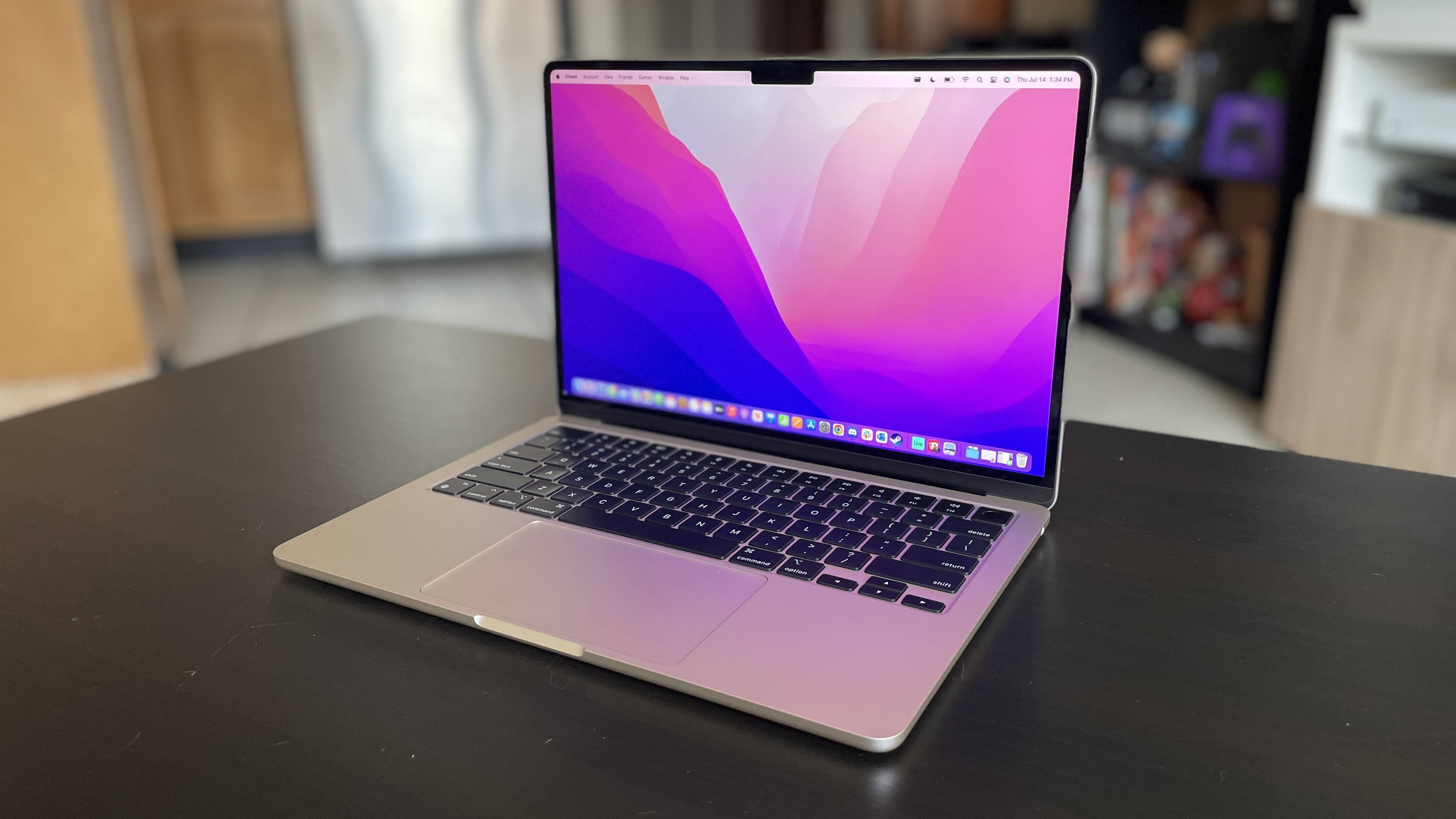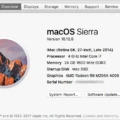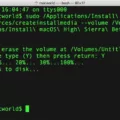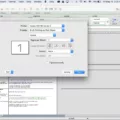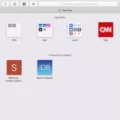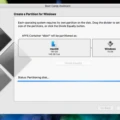Have you ever encountered the frustrating “Operation not permitted” error message when trying to use the ls command in Terminal on your Mac? If so, you’re not alone. This error can occur for various reasons, but fortunately, there are some simple solutions to fix it.
The ls command is a commonly used command in Terminal that lists the attributes of files and directories in a specified location. It is a useful tool for navigating and managing your files and directories. However, when you encounter the “Operation not permitted” error, it can hinder your ability to effectively use this command.
One possible reason for this error is related to the permissions set on your system. Mac OS X has a built-in security feature that restricts certain operations for the protection of your system. In order to fix the “Operation not permitted” error, you need to grant the Terminal app the necessary permissions to access your files and directories.
Here’s how you can do it:
1. Click on the Apple logo in the top-left corner of your screen and choose “System Preferences” from the dropdown menu.
2. In the System Preferences window, find and open the “Security & Privacy” option.
3. Within the Security & Privacy window, navigate to the “Privacy” tab.
4. On the left sidebar, locate and click on “Full Disk Access.”
5. To make changes, you’ll need to unlock the padlock in the bottom-left corner. Click on it and enter your Touch ID or password when prompted.
6. Once the padlock is unlocked, you can now add Terminal to the list of applications with Full Disk Access. Click on the “+” button, navigate to the Applications folder, and select Terminal.
7. After adding Terminal to the list, close the Security & Privacy window.
Now, try using the ls command in Terminal again. You should no longer encounter the “Operation not permitted” error. The ls command should now work as expected, listing the attributes of files and directories in the specified location.
It’s worth noting that this solution grants Full Disk Access to the Terminal app, which means it has broader permissions to access your files and directories. While this is necessary to fix the error, it’s important to exercise caution and only grant access to trusted applications.
The “Operation not permitted” error when using the ls command in Terminal on your Mac can be resolved by granting Full Disk Access to the Terminal app. By following the steps outlined above, you can fix this error and regain the functionality of the ls command.
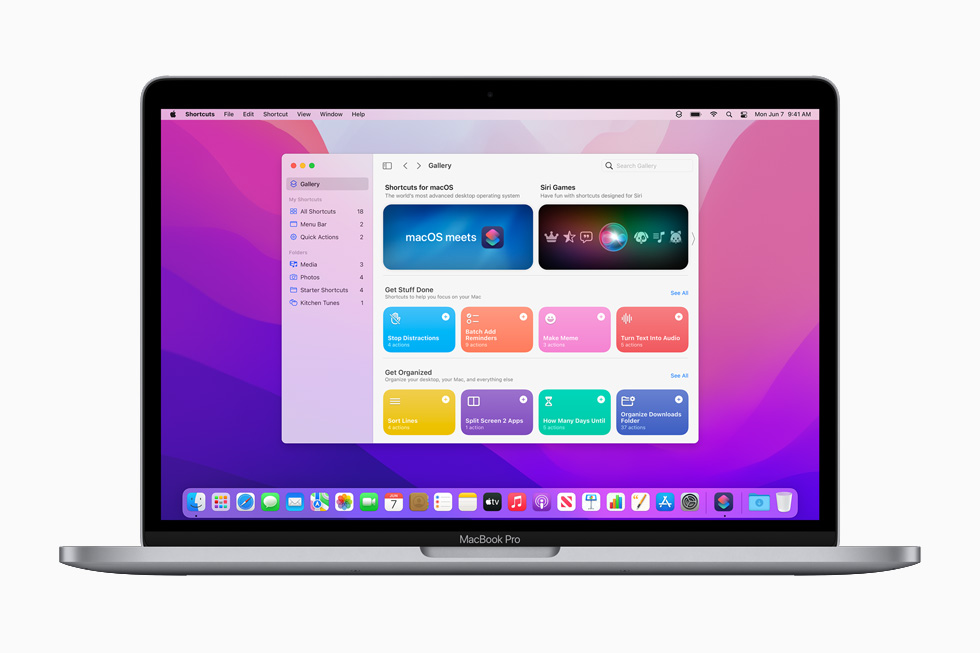
How to Fix Operation Not Permitted On Mac?
To fix the “Operation not permitted” error on your Mac, follow these steps:
1. Click on the Apple logo in the top-left corner of your screen and choose “System Preferences” from the dropdown menu.
2. In the System Preferences window, locate and click on “Security & Privacy.”
3. Within the Security & Privacy settings, select the “Privacy” tab.
4. On the left sidebar, you will find various privacy options. Look for “Full Disk Access” and click on it.
5. To make changes, you will need to unlock the settings. Click on the padlock icon in the lower-left corner of the window.
6. You will be prompted to authenticate the change with either Touch ID or your password. Provide the required authentication to proceed.
7. Once unlocked, you can now make changes to the Full Disk Access settings.
8. To grant Terminal full disk access, click on the “+” (plus) button below the list of applications.
9. A file browser will open. Navigate to the “Applications” folder and locate “Terminal.” Select Terminal and click on “Open.”
10. You will now see Terminal added to the list of applications with full disk access.
11. Close the Security & Privacy window, and you can now try running the desired commands in Terminal without encountering the “Operation not permitted” error.
By granting Terminal full disk access, you are allowing it to perform tasks that require access to protected system files and directories. This should resolve the “Operation not permitted” error and allow you to execute commands without any restrictions.
How to Enable Ls On Your Mac?
To enable colorized output for the ls command on your Mac, you need to configure the Terminal app. Here are the steps to do it:
1. Open the Terminal app on your Mac. You can find it in the Utilities folder, which is located within the Applications folder.
2. Once the Terminal window is open, go to the preferences by clicking on “Terminal” in the menu bar, and then selecting “Preferences.”
3. In the preferences window, click on the “Profiles” tab.
4. Select the profile you want to enable colorized output for, or create a new profile by clicking on the “+” button at the bottom left corner of the window.
5. With the desired profile selected, click on the “Text” tab.
6. Under the “Text” tab, you will see a checkbox that says “Display ANSI colors.” Make sure this checkbox is checked.
7. Close the preferences window.
Now, when you use the ls command in the Terminal, you will see colorized output. This makes it easier to distinguish between different file types and directories.
Note: The -G option mentioned in the original question is not required on Mac OS X, as the colorized output is already enabled by configuring the Terminal app as described above. The -G option is used on other Unix-like systems, such as FreeBSD, to enable colorized output for the ls command.
What Does Ls Mean in Mac Terminal?
The “ls” command stands for “list” in the Mac Terminal. It is used to display a list of files and directories within a specified directory or the current working directory. This command provides information such as the names of the files and directories, their permissions, file sizes, and the last modification time.
When you enter the “ls” command without any additional arguments, it will list the contents of the current directory. Each item in the list represents a file or a directory and is displayed in a single line. By default, files and directories are listed in alphabetical order.
Here are some additional options that can be used with the “ls” command in the Mac Terminal:
– “-l” option: This option displays the files and directories in a long format. It provides detailed information about each item, including permissions, ownership, file size, and modification time.
– “-a” option: With this option, the “ls” command also displays hidden files and directories, which are typically starting with a dot (e.g., .bash_profile).
– “-t” option: This option sorts the list of files and directories based on the modification time, showing the most recently modified items first.
– “-R” option: This option recursively lists the contents of directories, including all subdirectories and their contents.
– “-G” option: This option adds color to the output, making it easier to distinguish between files and directories.
By combining these options, you can customize the output of the “ls” command according to your needs. Additionally, you can specify a directory path as an argument to list the contents of a specific directory instead of the current working directory.
What is Operation Not Permitted?
Operation not permitted is an error message that indicates a failure to perform a specific operation due to lack of permission or authorization. In the context of networking and system administration, this error message commonly appears when attempting to execute certain commands or actions that require elevated privileges.
In the case of the specific error message “ping: sendmsg: Operation not permitted,” it means that the ICMP echo request packet, which is sent by the “ping” command to check the reachability of a network host, has been blocked by the Control Plane ACL (Access Control List). The ACL is a security measure used to control network traffic and filter out unwanted or potentially malicious packets.
When this error message is displayed, it implies that the system or network administrator has configured the Control Plane ACL to prevent the transmission of ICMP echo request packets, likely to enhance security or limit network traffic. Consequently, the “ping” command fails to send the packet, resulting in the “Operation not permitted” error.
It is important to note that this error message only appears when the system is intentionally blocking the ICMP echo request packets. If the message is not displayed and the “ping” command successfully sends the packet, it means that the operation is permitted and the packet can reach the destination host.
“Operation not permitted” is an error message indicating that the execution of a specific operation is denied due to lack of authorization. In the case of the “ping: sendmsg: Operation not permitted” message, it signifies that the ICMP echo request packet is being blocked by the Control Plane ACL.
Conclusion
The error message “Operation not permitted” that occurs when using the ls command in the Terminal on a Mac OS X or FreeBSD operating system can be resolved by adjusting the system’s security settings. By following a few simple steps, you can fix this issue and regain the ability to use the ls command with full functionality.
First, click on the Apple logo in the top left corner of the screen and select “System Preferences” from the drop-down menu. In the System Preferences window, locate and open the “Security & Privacy” option. Once open, navigate to the “Privacy” tab.
On the left sidebar of the Privacy tab, you will find an option called “Full Disk Access.” Click on it to select it. At this point, the padlock icon in the bottom left corner of the window may be locked. To unlock it, click on the padlock and provide your Touch ID or password.
Once the padlock is unlocked, you have the necessary permissions to make changes. Make sure the checkbox next to Terminal or the application you are using is selected. This grants the Terminal app the necessary access to perform operations such as ls without encountering the “Operation not permitted” error.
By following these steps and adjusting the Full Disk Access settings, you can fix the Terminal error and regain the ability to use the ls command to list files and directories on your Mac OS X or FreeBSD system.







